Spring Meeting WSC 2016
Spring meeting WSC 2016
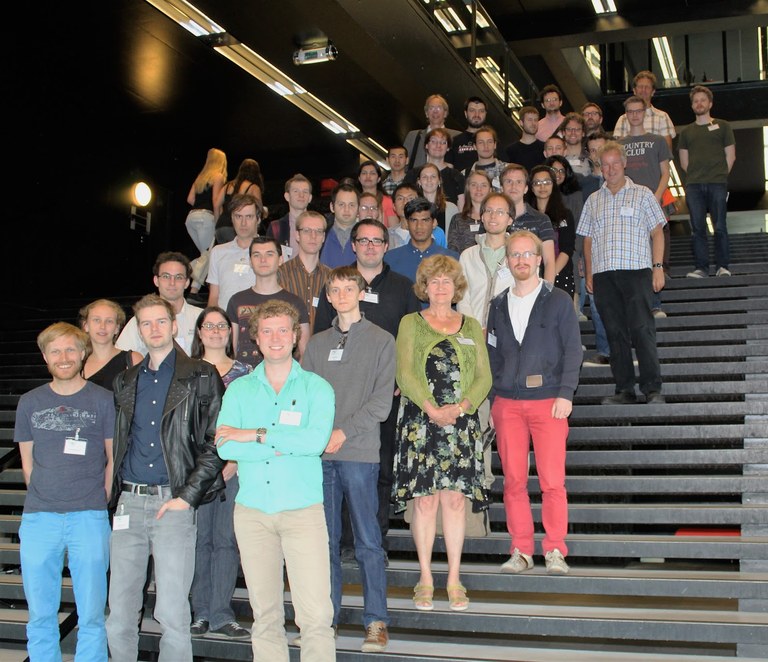
Participants WSC Spring Meeting 2016 in Utrecht
Friday May 13, 2016, the Werkgemeenschap Scientific Computing is organizing, together with the Mathematical Institute of the Utrecht University its yearly spring meeting in Utrecht. A mixture of ten young and senior researchers have been selected to give a presentation on their research.
Location Spring Meeting WSC 2016
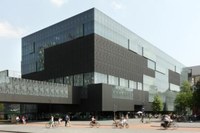
Universiteitsbibliotheek De Uithof
Both the presentations and the lunch and coffe/tea breaks take place in the Boothzaal (Aula), at the mezzanine of the Universiteitsbibliotheek de Uithof, Heidelberglaan 3, Utrecht.
How to reach the Universiteitsbibliotheek de Uithof?
By train:
From station Utrecht Centraal bus 12 goes to the Uithof. Get off at stop Heidelberglaan.
By car:
The Uithof is also accessible by car, exit 2 de Bilt, de Uithof of the A28.
For more information:
Travel directions and map
Pictures
Pictures of the meeting can be found here.
Organization
| This spring meeting is organized yearly by the de Werkgemeenschap Scientific Computing (WSC), this year in coorporation with the Mathematical Institute of the Utrecht University . Organizing comittee: Prof.dr.ir. Jason Frank (Utrecht University), Drs. Margreet Nool (CWI, secretary WSC), Martine Anholt (CWI, Deputy Secretary). Subsidy Financial support for this meeting has been obtained from Centrum Wiskunde & Informatica (CWI). The Werkgemeenschap Scientific Computing is very grateful for that support. |
Contact
Questions? Please ask: Martine Anholt or call +31 20 592 40 58.
Program WSC Spring meeting 2016
| 09.30-10.00 hours | Registration, coffee/tea |
| 10.00-10.35 hours | Harald van Brummelen (Eindhoven University of Technology) |
| Complex-Fluid/Solid Interaction Simulations based on Diffuse-Interface Binary-Fluid Models [abstract] | |
| 10.35-11.00 hours | Dirk Broersen (University of Amsterdam) |
| A promising DPG method for the transport equation [abstract] | |
| 11.00-11.25 hours | Steven Vandekerckhove (KU Leuven) |
| Automated non-destructive testing and evaluation [abstract] | |
| 11.25-11.50 hours | Coffee/tea break |
| 11.50-12.15 hours | Liesbeth Florentie (TU Delft) |
| Development of an improved source term model to include vortex generator effects in CFD simulations [abstract] | |
| 12.15-12.50 hours | Erik Mulder and Sven Baars (University of Groningen) |
| Methods for studying critical transitions in stochastic climate models [abstract] | |
| 12.50-14.00 hours | Lunch |
| 14.00-14.25 hours | Delphine Draelants (Antwerp University) |
| Numerical analysis of pattern formation in auxin transport models [abstracts] | |
| 14.25-14.50 hours | Korneel Dumon (KU Leuven) |
| Optimization of chaotic systems: a least squares shadowing approach [abstracts] | |
| 14.50-15.15 hours | Debarati Bhaumik (Centrum Wiskunde & Informatica) |
| Rare event simulation for power network with storage [abstract] | |
| 15:15-15:40 hours | Coffee/tea break |
| 15.40-16.15 hours | Giovanni Samaey (KU Leuven) |
| Numerical analysis of computational multiscale methods for kinetic equations [abstract] | |
| 16.15 | Drinks |
Speakers Spring meeting WSC 2016
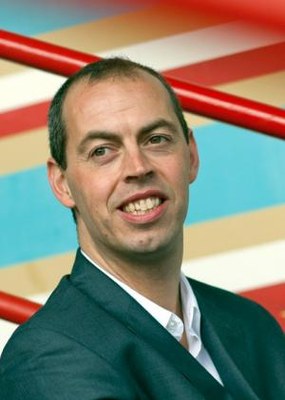 |
Prof. Harald van Brummelen (1972) is full professor at Eindhoven University of Technology, where he holds the chair of Multiscale Engineering Fluid Dynamics. Prof. van Brummelen received his MSc in Mechanical Engineering from Twente University in 1997 and his PhD in Applied Mathematics from the University of Amsterdam in 2002. His research focusses on the development, analysis and application of advanced computational techniques for multiscale flow problems, including fluid- structure interaction, multi-phase flows and transitional molecular/continuum flows. He is scientific director of the Eindhoven Multiscale Institute and chairman of the committee for Computational and Applied Mathematics of the European Community on Computational Methods in Applied Sciences. He has been programme director of the Multiscale Simulation Techniques (MuST) perspectief programme. He is a recipient of the Bill Morton prize, the J.-L. Lions Award and a VENI innovational-research grant. [slides] |
|
|
Dirk Broersen studied mathematics at the University of Amsterdam. After he graduated in 2012, he started his PhD at the Korteweg de Vries (KDV) institute for mathematics at the same university. His research is focused on the development of finite element methods for convection-dominated convection-diffusion problems. His work is supervised by Prof. dr. R.P Stevenson. [slides]
|
||
| |
Steven Vandekerckhove graduated as Mathematical Engineer at KU Leuven (Belgium). Since October 2011, he is a PhD researcher in the Wave Propagation and Signal Processing group at KU Leuven Kulak. His research focusses on numerical simulation of acoustic, electromagnetic and elastic wave propagation problems for applications in the field of non-destructive testing and evaluation. [slides]
|
|
| |
Liesbeth Florentie obtained her MSc degree in Aerospace Engineering cum laude at TU Delft in 2012. After her studies she worked for one year as an engineering consultant at Dynaflow Research Group, before starting as a PhD researcher in the Aerodynamics Group of Aerospace Engineering at TU Delft. Her research focuses on numerical simulations of vortex generator induced flow fields, and on the development of an improved model to take these flow effects into account. [slides]
|
|
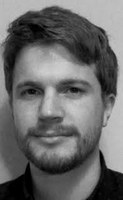 |
Erik Mulder and Sven Baars both studied Applied Mathematics at the University of Groningen, and started their PhDs at the Universities of Utrecht and Groningen, respectively. They work together on computational methods for solving ocean-climate problems within a collaboration between the computational science group in Groningen and the oceanography group in Utrecht. [slides] |
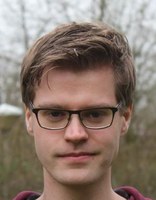 |
 |
Delphine Draelants obtained her Master degree on financial mathematics at the University of Antwerp in 2010. Since then she is a PhD-student in the group of Wim Vanroose. Her research focuses on numerical analysis of pattern formation in auxin transport models. [slides] |
|
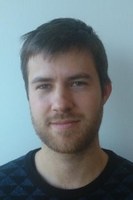 |
Korneel Dumon studied Mathematical Engineering at KU Leuven (Belgium). Since Februari 2015, he is a PhD researcher in the Numerical Analysis and Applied Mathematics group at KU Leuven. His research is situated in the field of optimal control, with the goal of optimizing ergodic quantities in turbulent flows. [slides] |
|
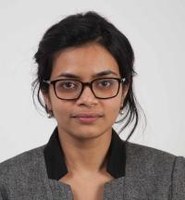 |
Debarati Bhaumik received the B.Sc.(Honours) degree in physics from St.Stephen’s College, University of Delhi, New Delhi, India in 2010 and the M.Sc. degree in physics from Indian Institute of Technology Madras, Chennai, India in 2012. She is a Ph.D. student in the Scientific Computing group at CWI Amsterdam. Her Ph.D. topic is reliability and robustness of power grids with uncertain generations, and her present research interests include stochastic modeling, integration of renewable energy in power network and Monte Carlo techniques for rare-event simulation. [slides] |
|
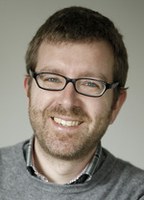 |
Giovanni Samaey obtained his PhD in 2006 from KU Leuven. After postdoctoral stays at INRIA (France) and Ecole des Ponts (France), he currently is a research professor at the Scientific Computing research group (Department of Computer Science) at KU Leuven. He is also a member of the Young Academy of Belgium (Jonge Academie). In May 2016, he publishes a popularising book "X-Factor" (in Dutch) on the use of mathematics for society, together with Joos Vandewalle. [slides] |
Abstracts
Harald van Brummelen (Eindhoven University of Technology)
Complex-Fluid/Solid Interaction Simulations based on Diffuse-Interface Binary-Fluid Models
Complex fluids are fluids that consist of multiple constituents, e.g. of multiple phases of the same fluid (gas, liquid or solid) or of multiple distinct species (e.g. water and air). The interaction of such complex fluids with elastic solids leads to multitudinous intricate physical phenomena. Examples are durotaxis, viz., seemingly spontaneous migration of liquid droplets on solid substrates with an elasticity gradient, or capillary origami, viz., large-scale solid deformations induced by capillary forces. Complex-Fluid-Solid Interaction (CFSI) is moreover of fundamental technological importance in a wide variety of applications, such as inkjet printing and additive manufacturing. Numerical simulation of CFSI presents a daunting challenge, on account of a variety of complicated interface phenomena, resulting from the coexistence of three distinct phases, viz. the two fluid constituents and the elastic solid, and the corresponding occurrence of contact lines.
In this presentation, we consider a computational model for complex-fluid-solid interaction based on a diffuse-interface model for the complex fluid and a hyperelastic-material model for the solid. The diffuse-interface complex-fluid model is described by the incompressible Navier–Stokes–Cahn–Hilliard equations with preferential-wetting boundary conditions at the fluid-solid interface. The corresponding fluid traction on the interface includes a capillary-stress contribution, and the dynamic interface condition comprises the traction exerted by the non-uniform fluid-solid surface tension. We present a weak formulation of the aggregated complex-fluid-solid-interaction problem, based on an Arbitrary-Lagrangian-Eulerian formulation of the Navier– Stokes–Cahn–Hilliard equations and a proper reformulation of the complex-fluid traction and the fluid-solid surface tension. To validate the presented complex-fluid- solid-interaction model, we present numerical results and conduct a comparison to experimental data for a droplet on a soft substrate [1,2].
[1] E.H. van Brummelen, H. Shokrpour Roudbari, and G.J. van Zwieten, Elasto-capillarity simulations based on the Navier-Stokes-Cahn-Hilliard equations, ArXiv 1510.02441v1 (2015), 1–8.
[2] R.W. Style et al., Universal deformation of soft substrates near a contact line and the direct measurement of solid surface stresses, Phys. Rev. Lett. 110 (2013), 066103
Dirk Broersen (University of Amsterdam)
A promising DPG method for the transport equation
A Discontinuous Galerkin finite element method will be presented for the stationary transport problem. Here, an optimal test space is introduced to get the best approximation to the solution from the trial space. To arrive at an implementable method, the truly optimal test space often has to be replaced by its projection onto a finite dimensional test search space. However, if the underlying test space is a broken space, one can determine the optimal test space analytically and locally, thereby reducing computational costs.
In the case of constant convection, these functions are typically piecewise polynomials. In the case of a non-constant convection term, determining the exact optimal test space gets more complicated. Replacing the convection term by a piecewise constant approximation, knowing the local optimal test functions from the case of constant convection then allows one to construct a test search space for which stability can be proved.
Our findings will be illustrated with numerical examples.
[back]
Steven Vandekerckhove (KU Leuven)
Automated non-destructive testing and evaluation
Non-destructive testing and evaluation (NDT&E) by ultrasonic (or electromagnetic) waves is important for the identification of material parameters, for quality assurance and life-time control. Many NDT&E techniques and procedures are available, but generally rely on a considerable amount of a priori knowledge and expertise which are often expensive or even unavailable. In this presentation, numerical field simulation combined with adjoint-based optimizing techniques is considered as an automated NDT&E technique, which can overcome the need for a priori knowledge and expertise.
[back]
Liesbeth Florentie (TU Delft)
Development of an improved source term model to include vortex generator effects in CFD simulations
The addition of vortex generators to lifting surfaces, like e.g. wind turbine blades, has the potential to significantly enhance their performance by delaying flow separation. The creation of a streamwise vortex in the boundary layer enhances flow mixing, thereby transporting high-momentum fluid towards the wall and re-energizing this near wall flow. For efficient application of these flow control devices, reliable simulations of their effect on the flow are essential. However, the large difference in scale between a typical vortex generator (sometimes smaller than the boundary layer thickness) and the overall structure of interest prohibits direct inclusion of these geometries into numerical meshes for industrial applications. In order to be able to take the effect of vortex generators on the flow into account, source term models are often used instead.
Local addition of a source term to the governing equations replaces the geometry and triggers the formation of a vortex in the flow. Although being useful in practice, these models typically fail to provide accurate information about important flow properties like the location of flow separation. This raises the question whether source term models are able to sufficiently accurate capture the disturbance of the boundary layer. To find an answer to this question, a constrained optimization framework is developed that allows to calculate the optimal source term to reproduce a given flow field. Results indicate that surprisingly accurate flow fields can be obtained when a suitable source term is used. These new insights with respect to optimal source term distributions are expected to be helpful in constructing improved models for including vortex generator effects in flow simulations.
[back]
Erik Mulder and Sven Baars (University of Groningen)
Methods for studying critical transitions in stochastic climate models
Techniques from numerical bifurcation analysis are very useful to study the transition from one equilibrium flow pattern to another and the instabilities involved. In this presentation we discuss how we use parameter continuation in determining probability density functions of flows governed by stochastic partial differential equations near fixed points, under a small noise approx- imation. We first show this using a stochastically forced time forward sim- ulation and next by solving a generalized Lyapunov equation using a novel iterative method involving low-rank approximations. We apply and illustrate the capabilities of the method on a phenomenon in physical oceanography, i.e. the occurrence of multiple equilibria of the Atlantic Ocean circulation.
[back]
Delphine Draelants (Antwerp University)
Numerical analysis of pattern formation in auxin transport models
Knowledge about the growth process of plants and how it is affected by different stimuli is very important because it can have an immediate impact on the productivity and can improve and secure the food supply for the dramatically increasing world population. Plant growth is a complex self-organizing process with feedback loops and interactions between different components over the whole tissue. In this talk I will concentrate on the analysis of auxin transport models. Auxin is a plant hormone that has a major influence on the growth process and the goal is to understand the auxin distribution patterns and to predict the effect of different stimuli.
We use a dynamical systems approach where we use numerical continuation methods and bifurcation analysis to detect the solutions and their stability as a function of the parameters. We showed that realistic tissues of cells are capable of generating a multitude of stationary patterns, with a variable number of auxin peaks, that can be selected by different initial conditions or by quasi-static changes in the active transport parameter. The competition between active transport and production rate determines whether peaks remain localised or cover the entire domain. In particular, changes in the auxin production that are fast with respect to the cellular life cycle affect the auxin peak distribution, switching from localised spots to fully patterned states. We relate the occurrence of localised patterns to a snaking bifurcation structure, which is known to arise in a wide variety of nonlinear media, but has not yet been reported in plant models.
[back]
Korneel Dumon (KU Leuven)
Optimization of chaotic systems: a least squares shadowing approach
Gradient-based optimization methods for dynamical systems require sensitivity information. The conventional method to compute sensitivities is to solve the variational equations or, equivalently, the adjoint equations. In chaotic systems, this approach is very ill-conditioned as solutions diverge over time. A recently developed technique, called least squares shadowing, provides an alternative approach which converges to correct sensitivity values.
[back]
Debarati Bhaumik (Centrum Wiskunde & Informatica)
Rare event simulation for power network with storage
The intermittent nature of the renewable energy sources like photo-voltaic arrays and wind turbines make their integration to the electrical power network a highly challenging task. However, these challenges can be alleviated by incorporating energy storage devices into the network. We studied two different rare-event problems when energy storage is integrated into the power system. The first problem focuses on minimizing large power spilled by a stand-alone energy system incorporated with a wind turbine and a battery. In the second problem we aim to the find the optimal placement of energy storage devices in the power network for its reliable operation. The probability that one of the line currents has exceeded its allowed maximum is considered as the reliability index of the problem.
Using the Crude Monte Carlo probability estimator for calculating the small values of large power spill probability and probability of line current violations becomes computationally intensive. We use the splitting technique for rare-event simulation for calculating small probabilities. For both the problems we formulate appropriate importance functions which play the most significant role in the efficiency of splitting.
[back]
Giovanni Samaey (KU Leuven)
Numerical analysis of computational multiscale methods for kinetic equations
Kinetic equations model the evolution of particles in phase space that usually contains position and velocity, but may also include some internal state of the particle. They are ubiquitous in science and engineering: the particles can be electrons and ions (in plasma physics), cells or bacteria (in biology) or even humans or cars (in sociology or traffic flow). Numerical simulation of kinetic models can be challenging, however, because the additional degrees of freedom of the particles appear as extra dimensions in the equation. Additionally, these models consist of multiple time scales, leading to stiffness. Both of these problems can be remedied by exploiting the use of approximate, low-dimensional macroscopic models that are written in terms of a few low-order moments, such as density, momentum and energy.
We give an overview of computational multiscale methods that are specifically designed to deal with this setting and discuss the convergence properties of these methods.
[back]


